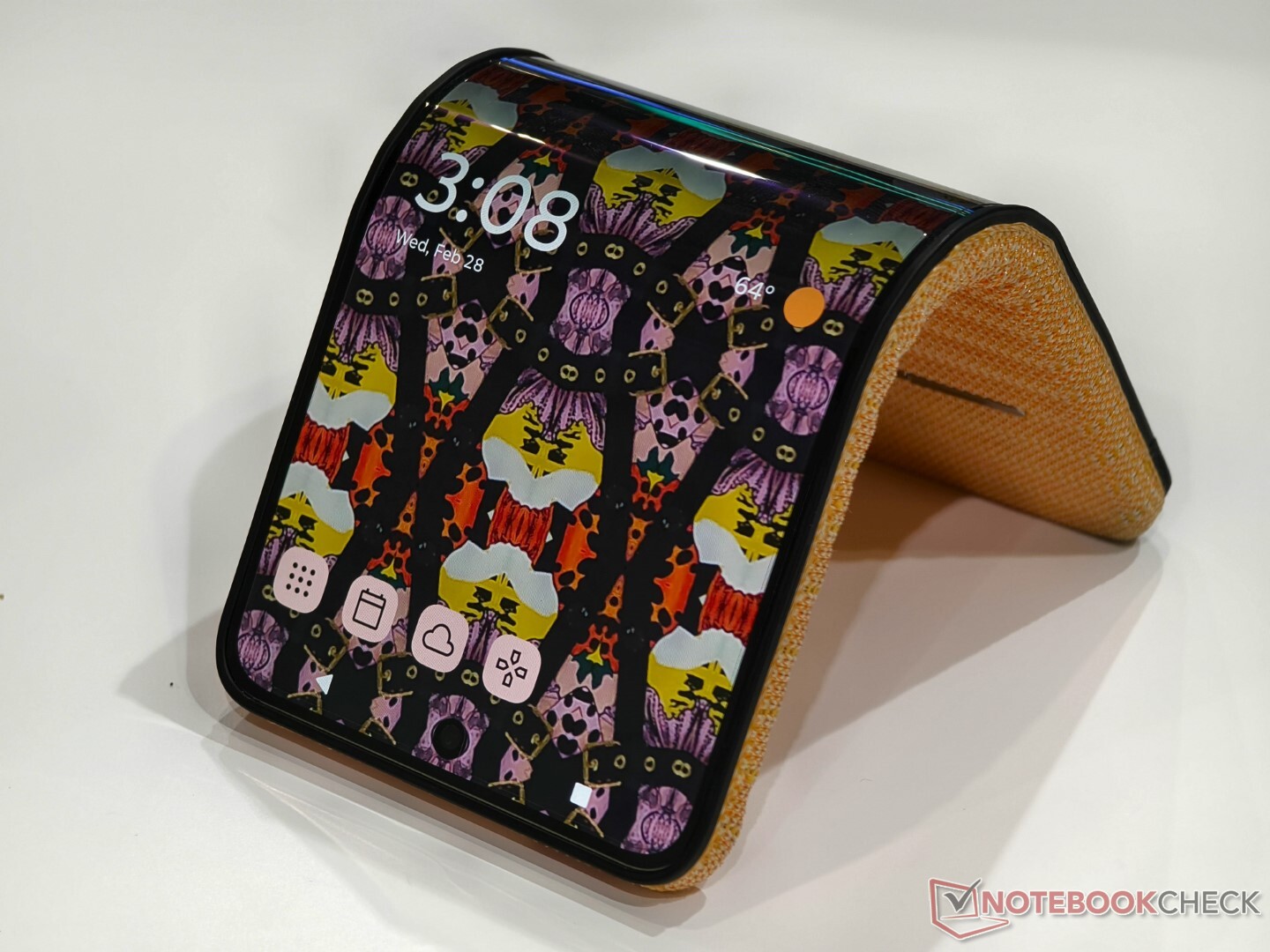
The same can be said for its software, which seemed relatively sophisticated for a concept device. As the photos below show, the demo software adapts to the display’s shape, with a smartwatch interface shown if it has been bent and worn as such. Incidentally, Lenovo has included magnets in the device’s bottom and top edges to hold it in place when in ‘watch mode’ that a representative added made it something of a fashion statement. However, these magnets attach the foldable to a conventional-looking watch strap, somewhat eliminating the spontaneity shown in Motorola’s October presentation.
Ultimately, it is only possible to bend its 6.9-inch display because of multiple small batteries that Lenovo has connected in a series. Compared to being arranged like a spine, these batteries are linked to the device’s hinge elements that make up its frame. Despite showing the Motorola Adaptive Display Concept twice in roughly four months, Lenovo stresses that it is an early development project and not a mass production-ready prototype. Thus, it could take Lenovo years to deliver a retail device, if it does at all.
Purchase the Motorola Razr Plus (2023) on Amazon
Notebookcheck
